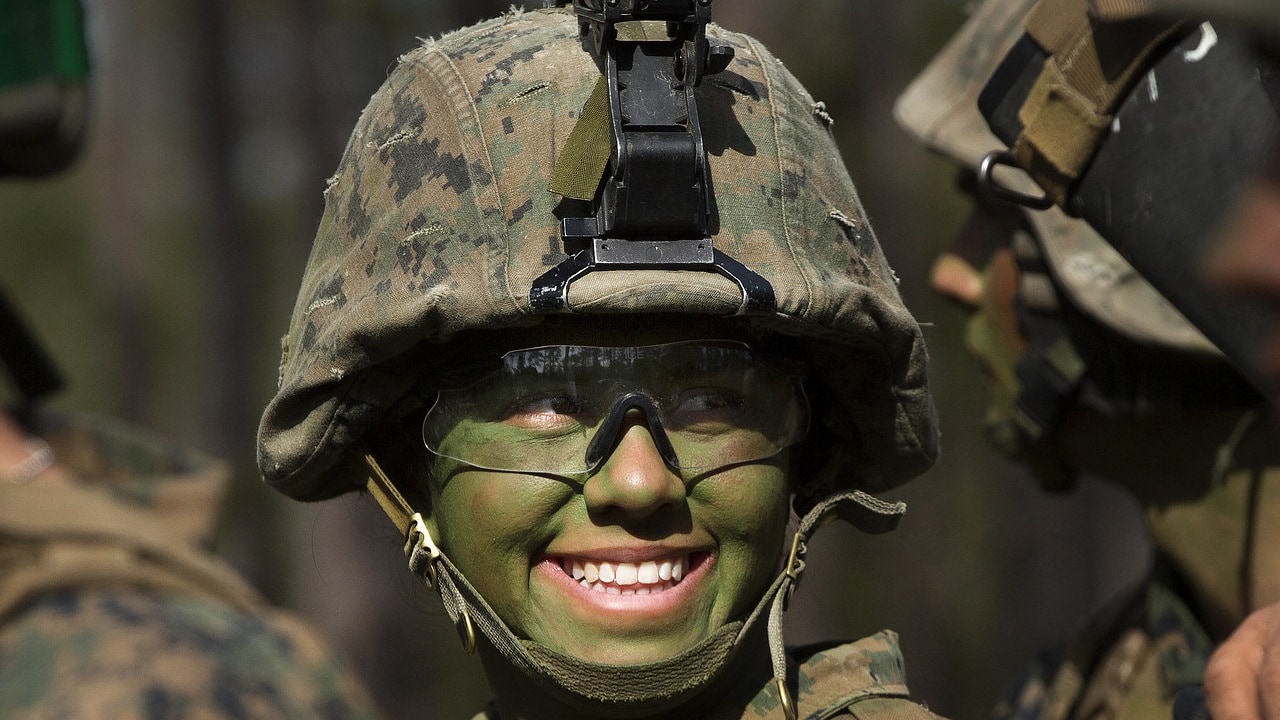Smart move, U.S. Marine Corps.
The Marine Corps has relaxed its regulations for women’s hair, including tight restrictions banning ponytails, a change that troops have been requesting for years.
In an administrative message released Wednesday, the branch again emphasized that, while all hairstyles must be “neat and professional,” female Marines are encouraged not to pull their hair back so tight as to put unnecessary tension on their follicles.
Women with medium length hair — hair that does not extend beyond 2 inches below the base of the collar’s lower edge — are now allowed “one unsecured half ponytail or up to two unsecured half braids” while in their utility uniform, flight suits, or workout clothes.
Until now, the Marine Corps was the only branch that did not allow women to wear ponytails of any kind in regular uniform.
The last uniform update, announced in March, rolled out more fingernail polish options and the option of better-fitting maternity uniforms for women.
For women with short hair, the new rules now allow for twists to be worn with any uniform.
A graphic posted to the uniform board website showed the half ponytail as a ponytail with more hair hanging loose behind it.
A half-braid was shown as a braid starting at the scalp but secured partway down and the remaining hair hanging loose.
Medium-haired women are also cautioned not to let their hair obscure their collar rank insignia.
Women who have hair beyond two inches in length are now allowed to have it “secured up so that it does not extend beyond two inches below the base of the collar’s lower edge.”
A press release described the style saying that “no portion of the hair should be left to fall naturally/unsecured or with exposed ends.”
Although not a change, the regulation also noted that “there is no requirement to have tightly pulled back or slicked back hair at any length” — a reference to the bun-style hairdo that became practically synonymous with female Marines.
The style involved a lot of work, the use of a sock and, often, copious amounts of hairspray.
It also puts a lot of tension on the hair, which both the Marines and medical groups say leads to damage and hair loss.
Konstantin Toropin is a reporter for Military.com (where this first appeared) specializing in coverage of the Navy and Marine Corps. He is also a US Navy veteran, having served five years in the surface fleet as a signals intelligence analyst. He has previously covered breaking national news for CNN, reporting on everything from protests to hurricanes from the field and the newsroom. Toropin’s coverage also included investigative work on false 2020 campaign claims and food processing plants amidst the pandemic. Toropin holds a Bachelor’s degree from The Pennsylvania State University in journalism and a Master’s degree in mass communication from the University of Minnesota.

